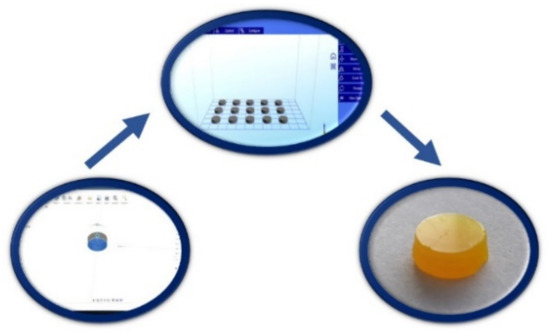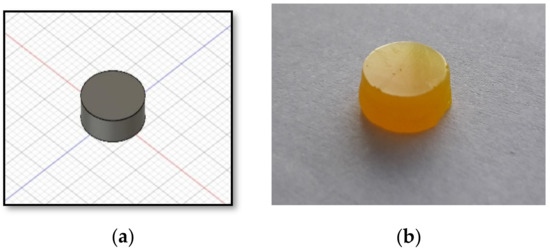In the recently published ‘Optimization and Prediction of Ibuprofen Release from 3D DLP Printlets Using Artificial Neural Networks,’ Serbian researchers explore detailed use of 3D printing with medications, experimenting to optimize extended drug release as well as target printability.
Design of experiments (DoE) is one of the most popular optimization techniques, along with the continued development of artificial neural networks (ANNs). Alternative approaches have employed feed-forward ANNs. With the use of neural networks, researchers can collect data on both patterns and relationships, depending on a system of units and neurons assimilated with ‘coefficients.’ The multilayered perceptron (MLP) neural network is one of the simplest, made up of multiple layers of neurons that can process and generalize after a training period.
“DoE enable determination of the quantitative relationship between selected input variables and responses while ANNs often exhibit superior performance in prediction of the responses for given values of inputs,” stated the researchers. “ANN can be used in completing one portion of data in the experimental design data pool, resulting in satisfying results for some outputs, considering the number of experimental data used for modeling.”
A Wanhao Duplicator 7 DLP 3D printer was used to fabricate printlets for oral dosage, with the template designed in Autodesk Fusion 360.
Printlets were printed with the following details:
- Layer thickness of 100 µm
- Bottom exposure of 800 s
- Ten bottom layers
Printlets were fabricated successfully with the previously mentioned exposure time of 800 s. All printlets had a smooth surface and consistent shape.
For Neural Network 1, the researchers found that by increasing layers, they subsequently decreased ‘the coefficient of determination,’ resulting ultimately in a network with three input and five output units, and eight hidden units in a single hidden layer.
“MLP was tested with a set of test data,” stated the researchers. “Three test formulations (Test 1, 2, 3) were prepared and examined in the same test conditions as formulations F1–F11. A correlation plot was constructed of the experimentally obtained responses and those predicted by MLP. The square coefficient R2 was 0.9478.”

Predicted and experimental cumulative % of ibuprofen release (a) for the test dataset in neural network 1 and (b) for the whole dataset (training, validation, and test) in neural network 2.
Neural Network 2 was optimized with five hidden layers, with units of 5,5,6,5.
“The data set consisted of training (90% of samples) and validation (10% of samples) subsets,” stated the researchers.
Drug release was predicted at time points of 4, 6, and 8 h was 41.96%, 63.34%, 70.00%, and 79.99% respectively, with successful placebo formulation.
“The relationship between excipients and drug release in tested formulations is complex and non-linear,” concluded the researchers. “Artificial neural networks with their ability to generalize can be a useful tool for understanding the effects of excipients on printlets characteristics with the aim to print printlets with the desired drug release.
“No single software or modeling algorithm can solve ‘all’ problems, but for better prediction and optimization, application of different softwares can be a helpful method. In this study it was demonstrated that adequate ANN is able to understand the input–output relationship in DLP printing of pharmaceutics.”
3D printing of medications and printlets continues, while progress may not be as rapid as the pharmaceutical or other industries may have expected. Today, researchers work on developing personal pharmaceutical solutions, patient-specific dosages for children, devices for better drug delivery, and more.
What do you think of this news? Let us know your thoughts! Join the discussion of this and other 3D printing topics at 3DPrintBoard.com.
[Source / Images: ‘Optimization and Prediction of Ibuprofen Release from 3D DLP Printlets Using Artificial Neural Networks’]Subscribe to Our Email Newsletter
Stay up-to-date on all the latest news from the 3D printing industry and receive information and offers from third party vendors.
You May Also Like
Wisconsin’s Evology Adds Digital Sheet Forming to Service Roster
Evology, a service bureau based in Wisconsin and specializing in serving strategic sectors like aerospace and defense, has added digital sheet forming (DSF) to its repertoire of manufacturing capabilities. Evology...
Boring Company Alum Score $9M for Advanced Composites Manufacturing
Layup Parts, a Huntington Beach, CA-based startup specializing in on-demand manufacturing of parts made from composites, has received $9 million in its latest financing round. Founders Fund, the VC firm...
Industrial Giant Ingersoll Rand Leads $19M Round Backing Inkbit’s AI-Driven 3D Printing
Inkbit, the Massachusetts-based original equipment manufacturer (OEM) of multi-material, AI-integrated 3D printers, has closed a $19 million financing round. Ingersoll Rand, a US giant in the industrial equipment sector, led...
3YOURMIND & Nigerian Oilfield Services Firm RusselSmith Team Up on 3D Printed Part Inventory
3YOURMIND, the German and U.S. software services provider specializing in digital inventory platforms for additive manufacturing (AM), has partnered with Nigerian oilfield services firm RusselSmith to digitize spare part files...




































